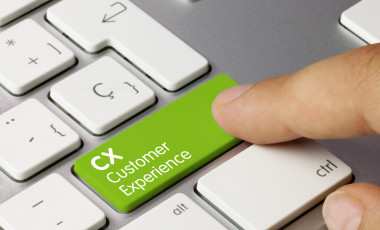The Form and Content of Digital Transformation
Increasingly, we hear the term 'Digital Transformation' in the context of the IT Industry and how it is changing the world around us in ways we could not have anticipated just a few years ago. It is real, and it has an impact. We see it in governance (Smart City) in commerce (Uber, Airbnb, personalization, omnichannel marketing), in finance (cryptocurrency, blockchain-enabled trade finance), and in manufacturing (IoT and industrial robots).
However, for many, the term is vaguely understood. While many understand the form that Digital Transformation takes - IoT, AI, Analytics, and its technology stack - very few understand the content of the term.
The Content of Digital Transformation
The content or the essence of digital transformation is that it radically transforms a business model or it causes disruption in an industry, and that is why it is powerful. The content is less technology and more business and therefore, people with a strong orientation to technology tend to focus on the form and miss out on the content.
It will require deeper engagement to understand the content of Digital Transformation. But as a quick guideline, there are some thumb rules that allow us to distinguish between a digital transformation initiative and an IT enablement initiative. An IT enablement initiative is usually about the automation of an existing business process to reduce cost and the time of execution. A digital transformation initiative, on the other hand, usually involves a lot more than that. The essential test we can apply to see whether an initiative is a digital transformation initiative or not is to see whether any of the following kinds of changes are taking place as a result of the initiative.
- Aggregation of Demand and/or Supply (Airbnb, Uber etc)
- Disintermediation (Flipkart, Amazon etc took out many distributors and retailers from the supply chain, blockchain can take away the need for intermediaries like banks for payments)
- Automation leveraging AI for analysis and insights (preliminary diagnostics in healthcare, algorithm-driven trading in capital markets etc.)
The first two are brought about by filling information gaps that are otherwise hindering a meaningful transaction. For instance, Uber provides the driver information about who requires a cab and the consumer the information about the cab, the driver and time of arrival. In other words, it connects demand and supply by plugging in information gaps. By doing just that, it drastically improves the utilization of the car (asset) and can bring down the operating cost and thereby the price of cab services. (Actual prices will of course be influenced by the profit-seeking nature of enterprises.)
The third is a lot more than that. It is made possible by advances in AI and the availability of information processing technology, whereby some of the capabilities of the human mind can be replicated by systems.
Let's get a little bit more into detail about the digital transformation of the above three kinds of changes to understand the difference from IT enablement.
Aggregation of Demand and Supply
Airbnb and Uber are digital platforms that are seen as models of digital transformation and disruption. Why do we call them instances of digital transformation? How did they bring about disruption, despite the fact that their service offerings are not new? One offers bed and breakfast services. The other taxi service. Both are not new concepts. What really made the difference?
By aggregating demand and supply using a digital platform, they created new possibilities that changed the nature of customer experience, impacted pricing and created a totally new service model that could scale with almost zero marginal cost.
Airbnb - Transforming the Hospitality Market
It is said that Airbnb started as a solution to the problem (of paying rent) by the founders. They had built a simple website offering bed and breakfast. By offering a simple but critical service of providing information about the availability and pricing of places to stay including non-conventional ones and facilitating bookings, they were able to cater to a large number of customers of varied profiles. This market share gave them the leverage to aggregate on the supply side and launch a number of digitally-driven initiatives that enhanced the customer experience as well as offered benefits to suppliers.
The trust factor was a major issue for those renting. Integration of rating/reviewer systems and Facebook profiles helped address the information gap and helped people make more informed choices. This helped to build chains of supply and demand where each player is self-motivated without the platform spending a dime on assets and their upkeep.
The Airbnb business model utilises a network of freelance photographers( directly paid by Airbnb) to visit properties and take high definition photographs of the property. These highly improved pictures boosted the click rates and allowed for better branding of their properties.
Thus by aggregating demand and supply and creating the right incentive structures for the actors in the ecosystem, they were able to build a new service delivery model that transformed customer experience.
Uber - Transforming the Taxi Services Market
As for Uber, while it does use the same aggregator business model there are variants in the key factors that brought about the disruption. The map locating technology along with the Uber app closed the information gap between the supply and the demand. The rating system and the surge pricing strategy helped them handle the fluctuations in demand against the supply.
This can be illustrated by its business model canvas as shown below.
Digital Disintermediation
In this kind of digital transformation, the middleman's role is removed, directly connecting the consumer and the manufacturer. Not only does this bring the customer closer to the source, but it also enables direct selling causing disruption in the value chain. Some prime examples are blockchains (disintermediation of banks), Amazon, and Flipkart. Both Amazon and Flipkart have disrupted the traditional brick and mortar stores sales and distribution model and have still succeeded in creating brands of great value.
By directly selling to the consumer online, a fish company in the South of India, ‘Daily Fish’ has eliminated the need for street hawkers and reached the consumers (homemakers or restaurants) directly through their app or website.
Leveraging AI for Analysis and Insights
At one point in time, insights generation and decision-making ability were not seen to be within the ambit of automation. However, AI and Big Data have now created new possibilities. Developed from a systematic analysis of relevant (labelled) data, analytics-driven insights bring to the forefront hidden truths that can be used to the advantage of the business.
For instance, AI-driven recommendation systems have shot up click-through rates of videos on YouTube. As of 2018, 100 hours of video are uploaded every minute. 5 billion videos are watched by 1.3 billion users( almost one-third of the internet users) every day.6
How did YouTube manage this kind of disruption? YouTube’s AI-based recommendation system. Their co-visitation based recommendation accounts for 207% of the ‘Most Viewed Page’ and 60% of the video clicks from the home page.7
In recent joint research by Accenture and MIT, ‘Winning in Analytics’ they found that high performing companies are embedding predictive analytics insights into key business processes which are twice that of low performers.
Without a doubt, analytics-based decision making is disrupting industries especially the healthcare industry, retail, finance and surprisingly the sports industry. A case in point is the way the Houston Astros won the major league baseball championship last year.8
The insights can be customer-focused when we are talking about business insights, algorithm-driven trading in capital markets, or it could be resource allocation or supply chain- having insights on anything based on the predictability of patterns that emerge from mapping the data garnered.
Digital Transformation as a Business Approach
So in conclusion, digital transformation is a three-pronged business approach performing end-to-end mapping of business activities, re-architecting the activities or introducing new value-creating activities using digital technology strategically, assessing and improving data management and analytics expertise, and leading to radically improved customer experiences, the emergence of radically new business models and industry structures.
References
- ‘Closing the Gap: Beyond Digitization to Business Transformation’, whitepaper, published in 2017, Cognizant-HBR, accessed June 2018
- Janaki Akella, Neha Gargi and Tusha Mehrotra, ‘Putting digital process innovation at the centre of organizational change’, article, published July 2015, Mckinsey.com, accessed June 2018
- ‘Digital Transformation of Industries: In collaboration with Accenture’, white paper, published January 2016, World Economic Forum, accessed June 2018
- ‘Digital Transformation: A Roadmap For Billion-Dollar Organizations’, white paper, published 2011, MIT Center for Digital Business and Capgemini Consulting, accessed June 2018
- Sourobh Das, ‘Airbnb Business Model: How Does Airbnb Make Money?’, brand study/ business model, updated April 2018, Feedough.com, accessed June 2018
- Salman Aslam, ‘YouTube by the Numbers: Stats, Demographics & Fun Facts’, blog, Published February 2018, Omnicore, accessed July 2018
- James Davidson, Benjamin Liebald, Junning Liu, Palash Nandy, Taylor Van Vleet, ‘The YouTube Video Recommendation System’, whitepaper, January 2010, Researchgate.net, accessed July 2018
- Jeff Luhnow, Aaron De Smet, Allen Webb, ‘How the Houston Astros are winning through advanced analytics, interview, published June 2018, Mckinsey Quarterly, accessed July 2018
Authors: Thomas P. Thomas, Nisha Oommen




